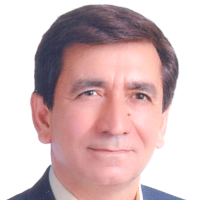Floristic analysis and study of plant diversity in protected rangeland of HusseinAbad - South Khorasan Province, Iran
In this study، the effects of reconstruction and conservation were investigated on plant diversity of the region of the international Carbon Sequestration Project in Hussein-Abad، South Khorasan province. In the study area، four vegetation types including Haloxylon persicum، Atriplex conescens، Haloxylon persicum + Atriplex conescens and Zygophyllum eurypterum were planted in 2004. Six years after that، the plant diversity indices of four replanted vegetation types along with control vegetation type (no replanting and conservation programs) was studied in two different dates (April and May) in 2011. For this purpose، 51 quadrates (2 × 2 m) were used in each vegetation type. Results showed that the maximum plant diversity and vegetation coverage were observed in Haloxylon persicum + Atriplex conescens (30 species and 22. 5%، respectively) vegetation types، and the minimum values of these indices were recorded in control (20 species and 5. 5%، respectively) vegetation type. The highest and the lowest values of plant density were obtained in Atriplex conescens (539،000 plant. ha-1) and control (179000 plant. ha-1) vegetation types، respectively. The Margalef’s richness index was higher in all protected vegetation types، while uniformity index and Shannon diversity index were higher in the control vegetation type. The frequency of 65% of plant species was less than 20% and about 45% of the plant species belonged to therophytes. Overall، the experimental results showed that desert ecosystems could play an important role to improve global biodiversity if proper management programs are employed.
-
Role of Rural Women in the Sustainability of Iran's Agroecosystems
Anahita Valiollahi Bisheh, Alireza Koocheki *, , Minoo Moallem
Agroecology journal, -
Evaluation of Local Methods Employed to Increase Biodiversity in the Agroecosystems: A Case Study in Western Khorasan Province
Maryam Javadi, Mohsen Jahan *, Mahdi Nassiri Mahallati
Agroecology journal, -
Evaluation of some growth traits of quinoa cultivars (Chenopodium quinoa Willd.) affected by moisture levels and planting date in two regions of South Khorasan
Farzane Golestanifar, Sohrab Mahmoodi *, , Ali Shahidi
Journal of Plant Production, -
The Effect of Corm Storage Conditions During the Summer Dormancy Stage on Reproductive Growth and Yield of Saffron
Sajjad Moradi-Moghaddam, *, Mohammadali Behdani, Sohrab Mahmoodi
Journal of Saffron Research, -
Feasibility of introducing medicinal plants into the cultivation pattern and feasibility assessment based on Bolin's logic (Chenaran county, Razavi Khorasan province)
Zari Afshar, Maryam Ghasemi *,
Arid regions Geographic Studies, -
Effect of Biochar Amendment and Irrigation Treatments on Biochemical Attributes and Morphological Criteria of Basil (Ocimum basilicum L.) Using Central Composite Design
A. Noroozi, P. Rezvani Moghaddam, M. Hashemian*, S. Khorramdel
Journal of Agricultural Science and Technology, May 2023




